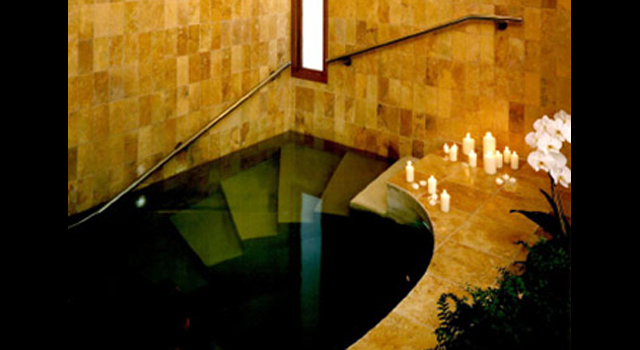By Shlomo Riskin
‘You shall make a menorah out of pure gold… its base, stem… And flowers… and its six branches extending from its sides, three branches on one side of the menorah and three branches on the other side;… they shall all be hammered out of single piece of pure gold’ (Exodus 25:31-36)
This week’s portion of Truma comes immediately after the Divine Revelation at Sinai: “And they shall make for Me a sanctuary so that I may dwell amongst them” (Exodus 25:8).
The Hebrews are commanded to build an elegant, majestic and portable House of God to carry with them during their 40-year desert sojourn. This desert sanctuary would morph into the more permanent Holy
Temple once Israel settled in the Promised Land of Israel.
It is no wonder that the first of the sacred furnishings of God’s “temporary home” was the ark, the repository for the tablets of the Decalogue (the Ten Commandments), which hold the major content of the Divine Revelation. The holy ark was fashioned out of acacia wood covered with a layer of pure gold both on the inside and outside. A cherub was hammered out at each end of its golden cover.
Each cherub had the face of child and a winged body serving as a representative of and protection for the Torah, which constitutes the beloved, holy and eternal words of God’s covenant with Israel. These cherubs symbolize the children of Israel, who study the Torah in each generation, and the sages of Israel, who interpret it.
However, there was a second sacred object in the sanctuary which is also linked to Torah: the menorah, or candelabrum. The root of this word is ner, candle, as in the verse, “the candle is commandment and Torah is light” (Proverbs 6:23). The menorah featured seven branches with a cup atop each. These cups held the wick, the oil and the flame of the candle.
The entire menorah is unmistakably similar to a tree, with branches, stems and flowers. This symbol is most aptly explained by the verse describing Torah as “a tree of life to those who grasp it, and those who
uphold it will be blessed” (Proverbs 3:18).
Why are there two different sacred accoutrements to the Sanctuary, the ark and the menorah, each of which is identified with Torah? Do these two objects of art and sanctity express different aspects of Torah? I would maintain that since the ark is found within the Holy of Holies, the innermost sanctum of the holy Temple, and since within this ark we find the holy tablets of stone, the ark represents the exclusive Torah of Israel. This is our sacred heritage that we must protect and transmit to our children and children’s children from generation to generation.
The light of the menorah, however, illuminates not only the space around itself but far beyond, representing the importance of spreading Torah throughout the world The tree of life must be preserved for those who wish to use Torah to perfect, or complete, the world in the kingship of God. The Torah that will return us to Eden is the Torah destined for all of humanity.
For this reason, the menorah cannot be merely gold plated as is the ark; it must be beaten out of one piece of pure gold, gold both within and without, because in order to be a kingdom of priests, teachers who reach out to the world, we must first become a holy nation, equally pure both within and without; otherwise we will never succeed in influencing the world.
Based upon these two aspects of Torah, the holy ark, which protects the Torah for Israel and the menorah, which spreads the Torah throughout the world, there were two types of windows in the holy Temple.
There were opaque windows, which prevented the outside world from seeing the Torah within, and there were transparent windows, which allowed the Torah to extend outwards (King Solomon made both transparent and opaque windows for the Temple, I Kings 6:4).
The Temple itself featured a sacrificial ritual that was unique to Israel, which included the Yom Kippur offerings that brought forgiveness and atonement exclusively to Israel. But the Temple also had an open-door policy that welcomed gentiles (I Kings 8:41-43) and encouraged all nations to “beat their swords into ploughshares and their spears into pruning hooks” (Isaiah 2, Micah 4).
The Hanukka menorah (hanukkia) was introduced after the comparatively small Maccabean army purified the Temple from Hellenistic influence and then (post-165 BCE) reached out to the world, publicizing God’s miracle. It must be kindled by in public thoroughfares as a message to the world. It is not mere coincidence that this “menorah to the world” has become the branding image of Chabad, which lights Hanukka menorahs in public places all over the world. And it was the Rebbe Menachem Mendel Schneerson (of blessed memory) who taught his disciples the necessity of teaching the seven Noahide laws to every human being.
Rabbi Shlomo Riskin is chancellor of Ohr Torah Stone and chief rabbi of Efrat, Israel.







 Southern New England Jewish Ledger
Southern New England Jewish Ledger













